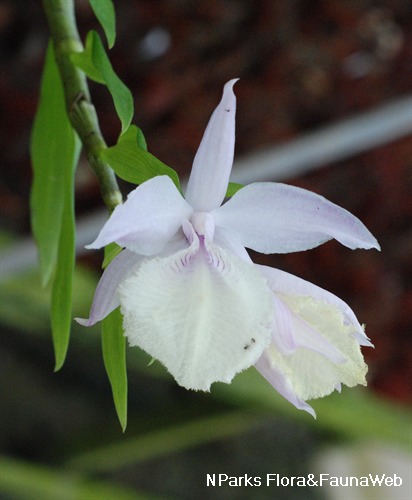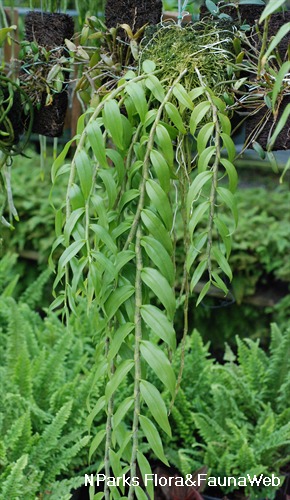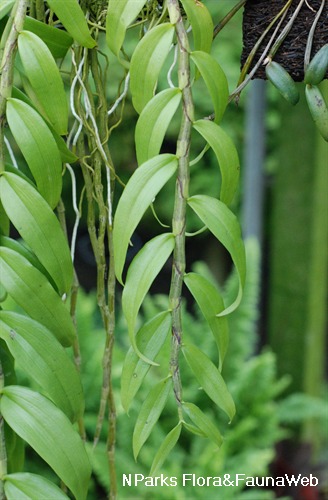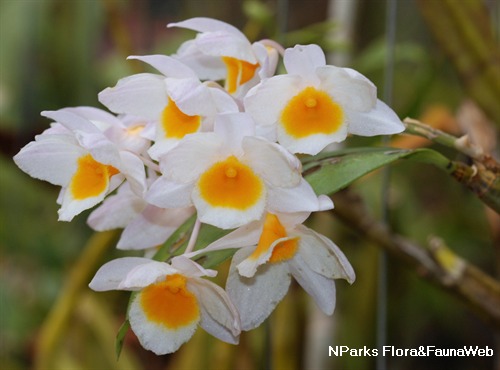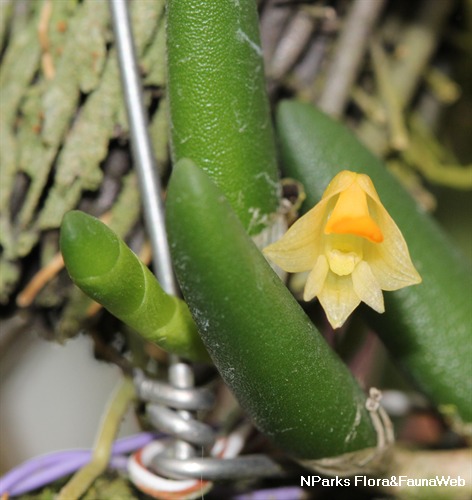
Back
Dendrobium aphyllum (Roxb.) Fischer
| Family Name: | Orchidaceae |
| Synonyms: | Cymbidium aphyllum (Roxb.) Sw., Dendrobium aphyllum (R.Br.) P.K.Sarkar var. cucullatum, Dendrobium aphyllum I.Barua var. katakianum |
Name
Classifications and Characteristics
| Plant Division | Angiosperms (Flowering Seed Plants) (Monocotyledon) |
|---|---|
| Plant Growth Form | Epiphyte |
| Mode of Nutrition | Autotrophic |
Biogeography
| Native Distribution | South-Central and South-East China, Assam, East and West Himalaya, Nepal, Laos, Myanmar, Thailand, Vietnam and Malaya. |
|---|---|
| Native Habitat | Terrestrial |
Description and Ethnobotany
| Growth Form | A sympodial epiphytic orchid. |
|---|---|
| Foliage | The leaves are deciduous, falling off after a period of time. |
| Stems | The stems are long, pendulous and cane-like. The stems range from 20 to 200cm in length. The older stems are leafless. |
| Flowers | The flower inflorescences originate from the leaf axils in the leafless stems. Each inflorescence is short and bears 1 to 3 flowers. The petals and sepals are pale purple while the flower lip is trumpet-shaped and white in colour with dark violet veins in the inner surface of the lip. The lip is covered with hairs on the lip exterior and the margins. The flowers are fragile and short-lived. |
| Cultivation | It is best grown under partial sun and mounted on fern or tree bark. |
Plant Care and Propagation
| Light Preference | Semi-Shade |
|---|---|
| Water Preference | Moderate Water |
| Propagation Method | Seed, Division |
Floral (Angiosperm)
| Flower & Plant Sexuality | Bisexual Flowers |
| Flower Colour(s) | Purple, White |
|---|---|
| Flower Grouping | Cluster / Inflorescence |
| Flower Location | Axillary |
| Flower Symmetry | Bilateral |
| Flower Lifespan on Plant | [Remarks] (The flowers are fragile and short-lived.) |
| Flower Lifespan on Plant - Remarks | The flowers are fragile and short-lived. |
Image Repository
Others
| Master ID | 31606 |
|---|---|
| Species ID | 6005 |
| Flora Disclaimer | The information in this website has been compiled from reliable sources, such as reference works on medicinal plants. It is not a substitute for medical advice or treatment and NParks does not purport to provide any medical advice. Readers should always consult his/her physician before using or consuming a plant for medicinal purposes. |

